Bare root planting: how to do it correctly
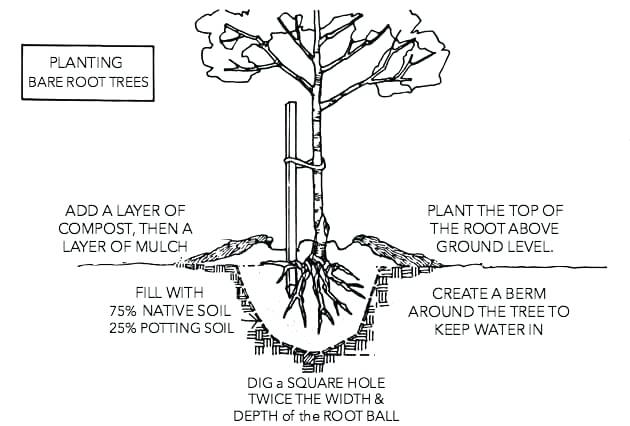
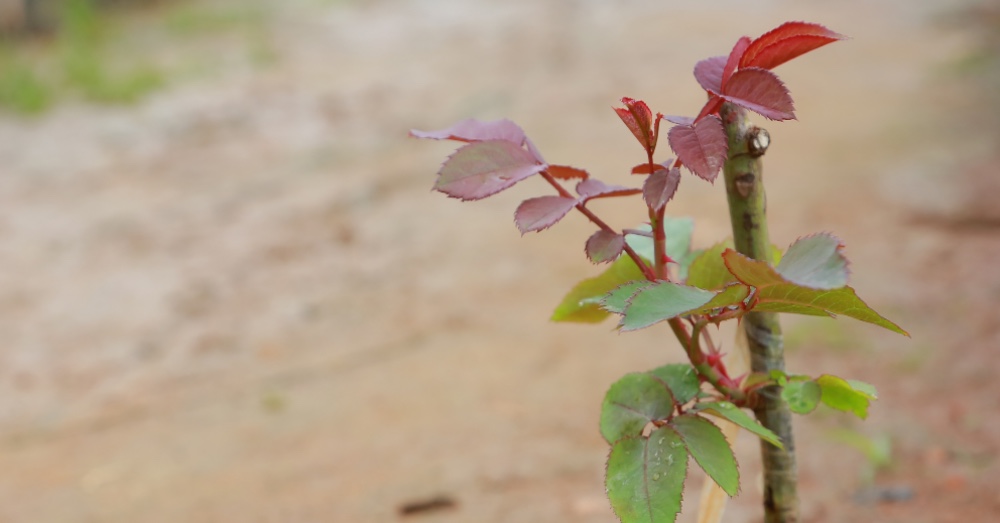
Bare root planting is a wonderful option for those who want to continue gardening in colder months. A way to enjoy bushes and trees that, with the arrival of good weather, will be rooted to grow properly. But beware: bare root planting has its peculiarities. And, far from being able to put them aside, they make the difference between our plant prospering or not. This does not mean that opting for this type of plantation is complicated. In reality, it just requires more care than a root-wrapped plant.
Before we go any further, let’s understand what the term bare root refers to. As the name suggests, this type of plant does not have a root ball of soil. The roots are exposed to the air and, therefore, are much more delicate than a plant that has them protected can be. And not only that. Bare root planting involves keeping certain guidelines in mind. Some that seek, fundamentally, to encourage the grip of the bush or tree that we have chosen; and that it lacks land around it on which to grow.
Because of how sensitive it is to plant bare root, let’s see the essential steps to do it successfully. Assumable ones for any level of gardening and that only demand one thing: affection.
HOW TO CHOOSE AND PREPARE A PROPERTY FOR BARE-ROOT PLANTING
Just as important as knowing how to plant bare root is choosing the right plant. Let us bear in mind that, lacking land, the future of our plantation lies in the initial state of the plant. Therefore, far from rushing, it is important to take some time to choose it and prepare it correctly. Only by taking great care of these roots will we be able to guarantee that our plant, whatever it is, will succeed.
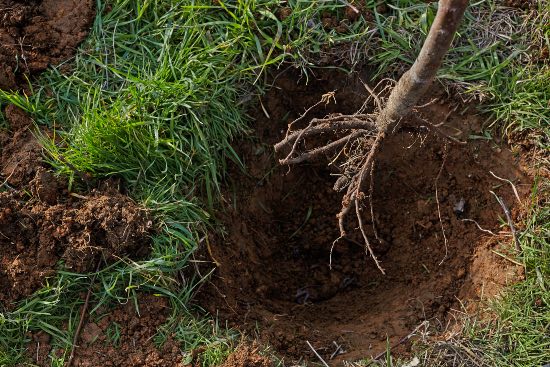
If the health of the roots is already important in a plant with a root ball, in a bare root it becomes crucial. A good reason to check some aspects before planting.
1. Check the direction of the roots, an important detail for bare root planting
Although it may seem like an unimportant detail, nothing is further from the truth. When a plant has its roots in different directions, it is more likely to root correctly. Most plant species have radial rooting. Hence, if we are facing a specimen with all the roots towards the same side, it is better that we opt for another. Doing so will be optimizing the possibilities of settling and growing correctly.
2. Prune roots that are not in perfect condition
As with root ball plants, the roots are not always in perfect condition. In this case, it is not so serious since having land around the plant is protected and you can do without some of them. However, this changes substantially when it comes to bare root planting. For these plants, it is essential that all the roots that are included in the soil are perfect. Hence it is crucial to prune any that are dry or rotten before planting.
3. Moisten them before bare root planting
Bare root plants are usually presented with these surrounded by plastic. A material that protects them from impacts and cuts but, at the same time, can dehydrate them. Therefore, before planting bare root, it is important to give them the water they need again.
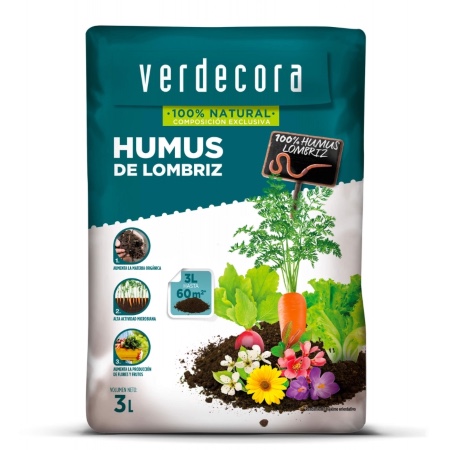
It is clear that we can do it simply by putting them in water for a while so that they once again have the water they demand. But, if we want to go one step further, the ideal is to create a poultice of water and worm castings. Both planting and transplant times are stressful for plants. Something that lowers its defense capacity against pests, fungi and other enemies. In these types of moments, it is essential to know how to use the worm castings correctly. Because one of its many benefits is, precisely, the ability to protect the plant from any external aggression. And, added, it favors rooting. A full-fledged two-in-one!
HOW TO PLANT BARE ROOT STEP BY STEP
Knowing how to plant bare root will not only prevent the frustration of seeing your plant fail. It will also allow us to plant in the cold months, since it is one of the winter planting styles. And, far from being relegated to a few types of plants, it applies to numerous plant species. What’s more: it is highly likely that, if we decide to take advantage of the months of January and February to plant rose bushes, they will have this type of root. In this case, in addition to knowing the details of how to plant bare root, it doesn’t hurt to know how to plant a rosebush correctly. The sum of both knowledge will make our plant prosper.
As we said before, bare root planting is not complicated. It only implies knowing some important details that will allow our plantation to succeed. So nothing like seeing the step by step in detail before deciding to plant taking advantage of the cold.
1. Prepare the ground, the starting point for bare root planting
An essential step. It is clear that when planting any plant, we have to take great care of the space in which we will do it. However, when it comes to bare root planting we have to take even more precautions. To begin with, we must eliminate everything that is an impediment to its growth. And we are not just referring to ancient roots that may be in space or stones. We will also have to consider eradicating weeds since they will be an enemy of the progress of our plant.
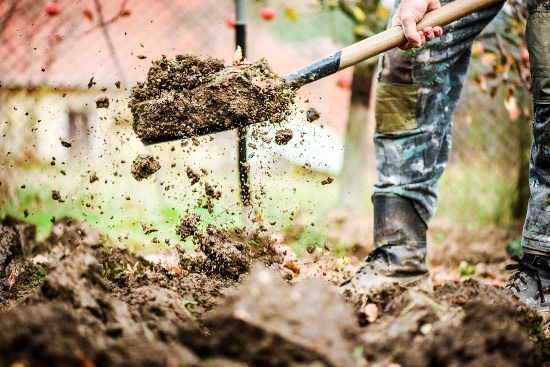
In addition to this, it is important to make a well in conditions. A bare root plant lacks that extra fixation that facilitates the root ball. For this reason, and in the absence of it, we will have to support the plant through the substrate. Hence, the ideal is that we make a well a little more than half a meter deep, and close to those dimensions in diameter. Only then will the weight and pressure of the earth be able to keep our plant upright.
Finally, one more note before planting bare root: it is vital that the soil is neither waterlogged nor frozen. If you have excess water, the roots can rot. If it is frozen, the compaction of the ground will prevent them from developing correctly.
2. Enrich the soil
Planting bare root requires that we take great care of the soil in which the plant sits. Therefore, it is important to choose a substrate that has the nutrients that the new plant needs. Something that forces us to choose a planting substrate that, in addition to nutrients, has something fundamental: rooting. A detail that will promote the creation of new roots and the growth of existing ones. And not only that: this type of substrate also offers the spongy and airy texture that new roots demand to grow.
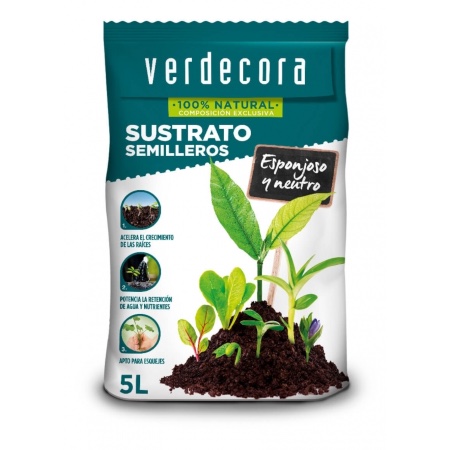
Finally, it does not hurt to mix the substrate with fertilizer. One that, as we mentioned before, can be earthworm humus. A very complete amendment, both for its nutritional power and for its rooting capacity.
3. Place and support our plant
We come to the trickiest part of bare root planting. In addition to centering our plant well in the planting hole, we will have to extend the roots well to encourage them to take hold. If we have only hydrated the roots without using earthworm humus, it is worth applying a dose of microrhizae: a compound that favors the creation of root-protecting fungi. Once the roots are ready, we will have to fill the hole with substrate. Eye: nothing to weigh down the soil around the roots.
Finally, it does not hurt to tutor the plant. As it lacks a root ball and although we conveniently fill the soil, the easiest thing is that it does not stand up by itself.
4. Tamp down and lightly water the ground
As we would do with any other plant, tamping the soil helps to fix the substrate and, therefore, our plant. After doing so, nothing like a light and abundant watering.
5. Mulch, last detail to plant bare root
One last detail to finish. Since the roots are slightly unprotected, it doesn’t hurt to mulch above ground. Thanks to it, we will be subtracting the cold and, incidentally, making sure that the humidity does not escape. It is enough to apply pine bark, which will also prevent the formation of weeds; or dry leaves.
And if you are thinking of planting bare root, do not hesitate! It is a wonderful way to prepare, from winter, the next spring.

![Photo of Lobularia Maritima: [Cultivation, Care, Pests and Diseases]](https://www.complete-gardening.com/wp-content/uploads/2022/08/lobularia-maritima-cultivation-care-pests-and-diseases-390x220.jpg)

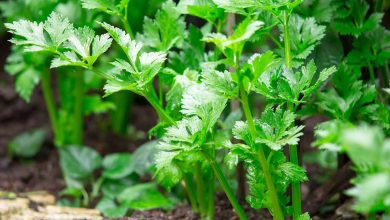
![Photo of Varieties of Granada: [Characteristics and Classification]](https://www.complete-gardening.com/wp-content/uploads/2022/08/varieties-of-granada-characteristics-and-classification-390x220.jpg)